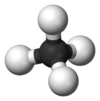Chemistry:Neodymium(III) hydride
From HandWiki
| Names | |
|---|---|
| Other names
Neodymium(III) hydride
| |
| Identifiers | |
3D model (JSmol)
|
|
| ChemSpider | |
| EC Number |
|
PubChem CID
|
|
| |
| |
| Properties | |
| NdH3 | |
| Hazards | |
| GHS pictograms |  
|
| GHS Signal word | Danger |
| H250, H260, H315, H319 | |
| P210, P222, P223, P231, P231+232, P233, P264, P264+265Script error: No such module "Preview warning".Category:GHS errors, P280, P302+335+334Script error: No such module "Preview warning".Category:GHS errors, P302+352, P305+351+338, P321, P332+317Script error: No such module "Preview warning".Category:GHS errors, P337+317Script error: No such module "Preview warning".Category:GHS errors, P362+364Script error: No such module "Preview warning".Category:GHS errors, P370+378, P402+404, P501 | |
| Related compounds | |
Other anions
|
Neodymium(III) oxide Neodymium(III) acetate Neodymium(III) chloride |
Other cations
|
europium hydride ytterbium hydride |
Except where otherwise noted, data are given for materials in their standard state (at 25 °C [77 °F], 100 kPa). | |
| Infobox references | |
Neodymium(III) hydride is an inorganic compound composed of neodymium and hydrogen with a chemical formula NdH3.[2][3] In this compound, the neodymium atom is in the +3 oxidation state and the hydrogen atoms are -1. It is highly reactive.[4]
Preparation
Neodymium(III) hydride can be produced by directly reacting neodymium and hydrogen gas:[5]
- 2Nd + 3H2 → 2NdH3
It can also be made by hydrogenerating neodymium(II) hydride.[6]
Properties
Neodymium hydride is a blue crystal of the hexagonal system, with unit cell parameters a=0.385 nm, c=0.688 nm.[7]
It reacts with water to form neodymium hydroxide and hydrogen gas:[8]
- NdH3 + 3 H2O → Nd(OH)3 + 3 H2
See also
References
- ↑ "Neodymium hydride (NdH3)" (in en). https://pubchem.ncbi.nlm.nih.gov/compound/166940#section=Safety-and-Hazards.
- ↑ Химия и технология редких и рассеянных элементов, ч. II. М.: Высш. школа. 1976.
- ↑ Диаграммы состояния двойных металлических систем. 1. М.: Машиностроение. 1996. ISBN 5-217-02688-X.
- ↑ The 5f3 vs. 4f3. Routes to and properties of highly reactive neodymium(III) hydrocarbyl and hydride complexes Heiko Mauermann, Paul N. Swepston, and Tobin J. Marks Organometallics 1985 4 (1), 200-202 DOI: 10.1021/om00120a036
- ↑ Richter, Bo; Grinderslev, Jakob B.; Møller, Kasper T.; Paskevicius, Mark; Jensen, Torben R. (Aug 23, 2018). "From Metal Hydrides to Metal Borohydrides". Inorganic Chemistry (American Chemical Society (ACS)) 57 (17): 10768–10780. doi:10.1021/acs.inorgchem.8b01398. ISSN 0020-1669. PMID 30137973.
- ↑ Fukai, Y. (2005). The Metal-Hydrogen System, Basic Bulk Properties, 2d edition. Springer. ISBN 978-3-540-00494-3.
- ↑ Peterson, D. T.; Poskie, T. J.; Straatmann, J. A. (1971-02-01). "Neodymium-neodymium hydride phase system" (in en). Journal of the Less Common Metals 23 (2): 177–183. doi:10.1016/0022-5088(71)90078-6. ISSN 0022-5088. https://dx.doi.org/10.1016/0022-5088%2871%2990078-6.
- ↑ Widerøe, Marius; Fjellvåg, Helmer; Norby, Truls; Willy Poulsen, Finn; Willestofte Berg, Rolf (2011-07-01). "NdHO, a novel oxyhydride" (in en). Journal of Solid State Chemistry 184 (7): 1890–1894. doi:10.1016/j.jssc.2011.05.025. ISSN 0022-4596. https://www.sciencedirect.com/science/article/pii/S002245961100274X.
 |








